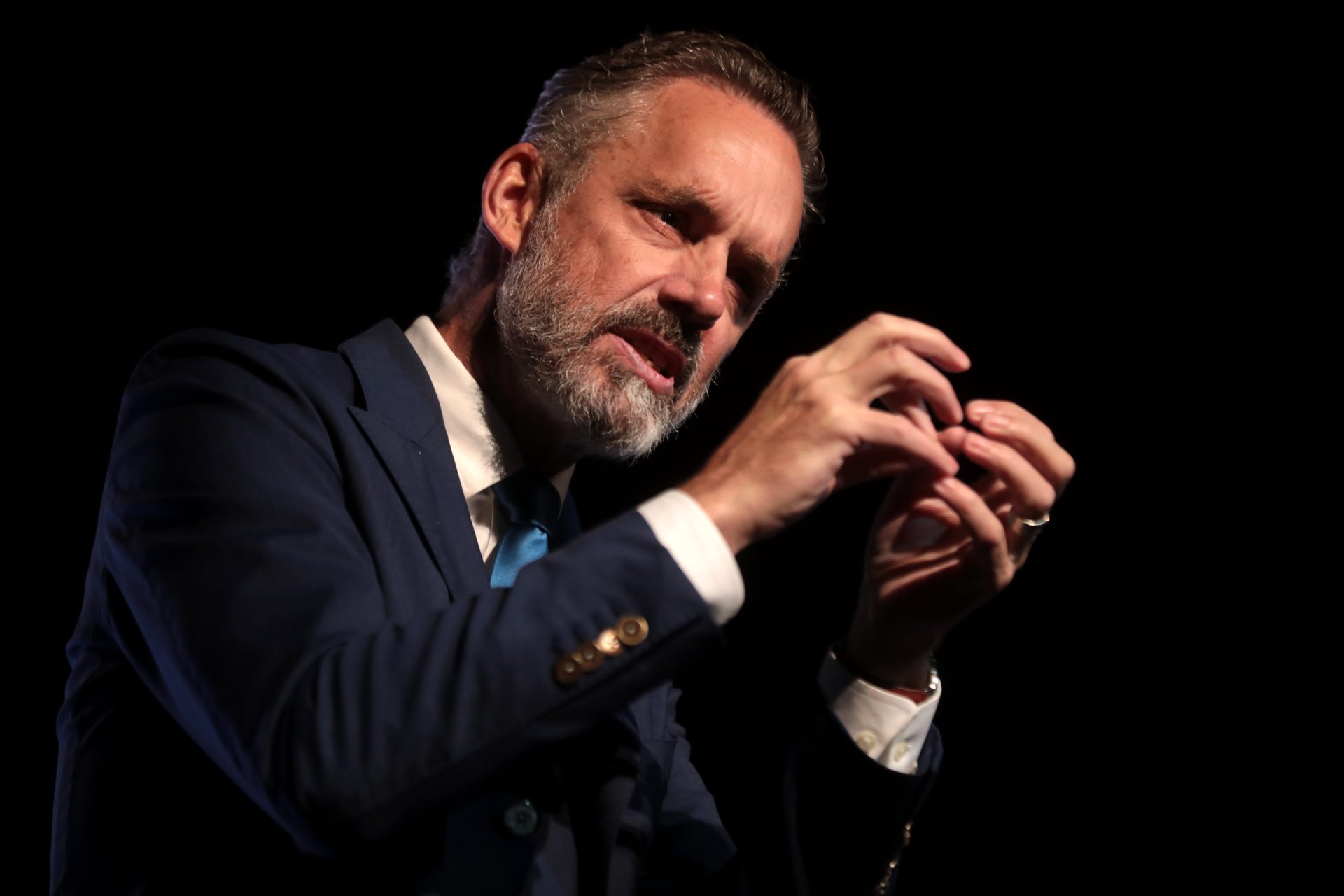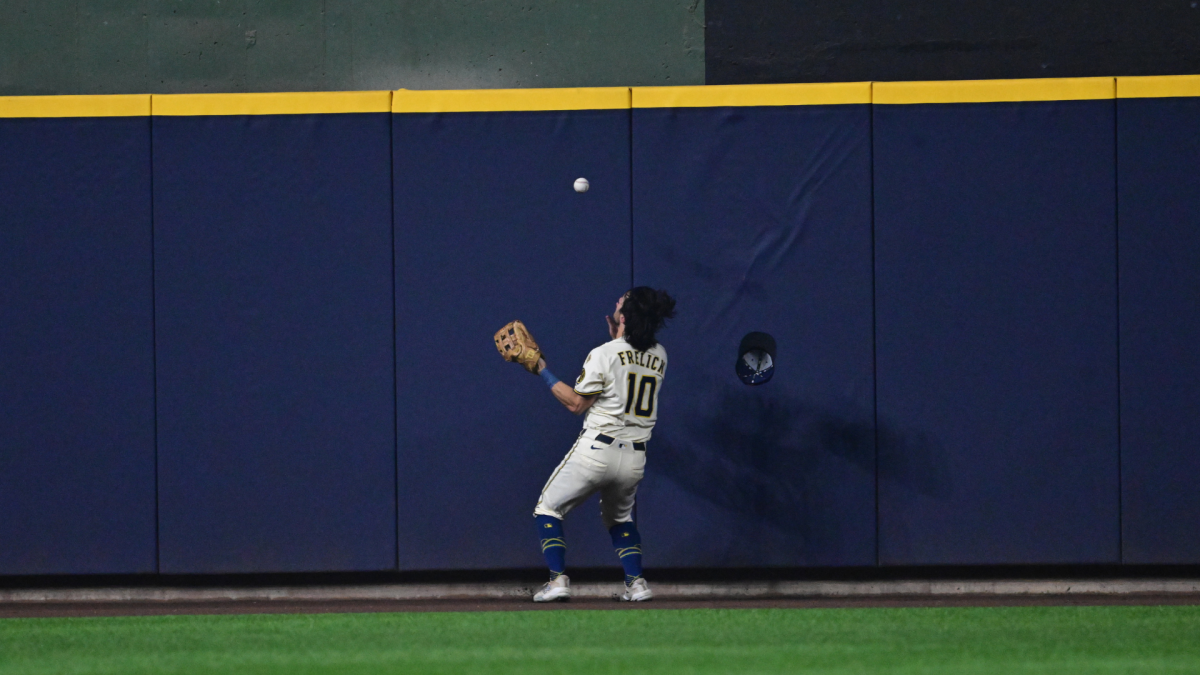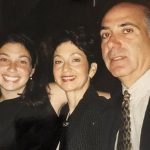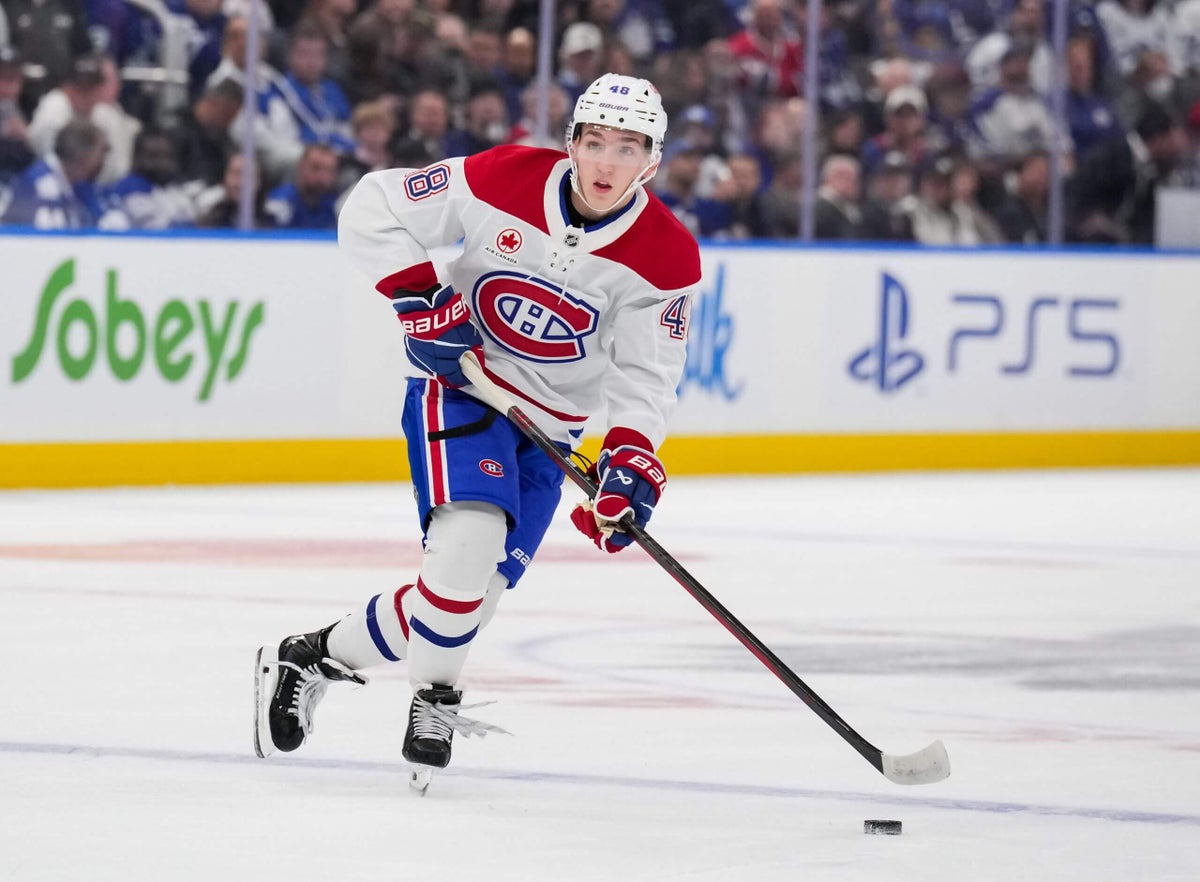Leave it to the common sense-defying 2025 Brewers to turn a 404-foot fly ball into a double play.
In Game 1 of the NLCS on Monday night (LA 2, MIL 1), Milwaukee turned Max Muncy’s rocket to the center field wall into force outs at home plate and third base to escape a bases-loaded jam and keep the game scoreless. The Dodgers squared up Quinn Priester pretty well all inning and walked away with nothing.
The scene: L.A. had the bases loaded with one out when Muncy hit a ball to the wall in center. Sal Frelick went up for the catch and the ball clanked out of his glove, hit the wall, then was caught on the way back down. Because the ball hit the wall before the catch, it’s in play and not an out. Left field umpire Chad Fairchild correctly signaled “no catch” all the way.
Amid the confusion, all three Dodgers baserunners held up, which gave the Brewers enough time to get the force out at the plate. Catcher William Contreras then jogged down to third base to get the force out there, ending the inning. Here’s the play:
Teoscar Hernández, the runner at third base, made the biggest mistake. He’s tagging up on the play, as he should have, but even if he was unsure the catch was made cleanly, he has to break for home as soon as Frelick has the ball in his glove. Instead, Hernández waited long enough to go home that he was forced out. Will Smith, the runner at second, never advanced to third and was also forced out.
“It happened fast. I didn’t know he didn’t catch it, to be quite honest,” Dodgers manager Dave Roberts said after the game. “We go over that rule. Teo knows the rule. I think right there he had just a little bit of a brain fart, appreciating that when it does hit the glove you can tag there. But then he tagged, did it correctly, then saw he didn’t catch it, he went back. That was the mistake. But he owned it. And after that there’s nothing else you can do about it.”
The Dodgers challenged the play, hoping to get at least one of the force outs overturned, but no luck.
“I just wanted clarity … They nailed it,” Roberts said.
Officially, it goes down as an 8-6-2 grounded into double play. Yes, “grounded” into a double play. Baseball scoring can be weird like that sometimes. Rule 5.09(a)(1) covers catching the ball. Here’s the rule:
A catch is the act of a fielder in getting secure possession in his hand or glove of a ball in flight and firmly holding it; providing he does not use his cap, protector, pocket or any other part of his uniform in getting possession. It is not a catch, however, if simultaneously or immediately following his contact with the ball, he collides with a player, or with a wall, or if he falls down, and as a result of such collision or falling, drops the ball.
Frelick made contact with the ball before it hit the wall, negating the catch. Catching the ball on the way down was just a stroke of good luck (or nice defense) by Frelick. It did not result in an out. Once the ball hit the wall, it was a base hit for Muncy, and the runners had to advance. They didn’t, and the Brewers turned an unconventional inning-ending double play.
“Sal caught it, then it touched the wall. A baserunner got confused, and we got it in as quickly as possible, made the play at the plate. And heads-up, William got the out at third,” Brewers manager Pat Murphy said postgame. “I mean, it’s very unusual. It’s tough for the baserunner to figure out what happened, but it’s one of those plays in baseball. We got very fortunate there.”
Lost in the craziness: The Dodgers hit Priester well that inning. Hernández walked, Freddie Freeman hit a rocket to left field that Isaac Collins had to jump to catch, Smith and Tommy Edman singled, then Muncy hit a ball to the top of the wall in center. Priester and the Brewers are fortunate to escape that inning without a run scoring.
The double play ultimately was not costly as the Dodgers survived a bases-loaded scare in the ninth inning to take Game 1. Historically, the team that wins Game 1 of a best-of-seven has gone on to win the series 65% of the time.
First Appeared on
Source link













